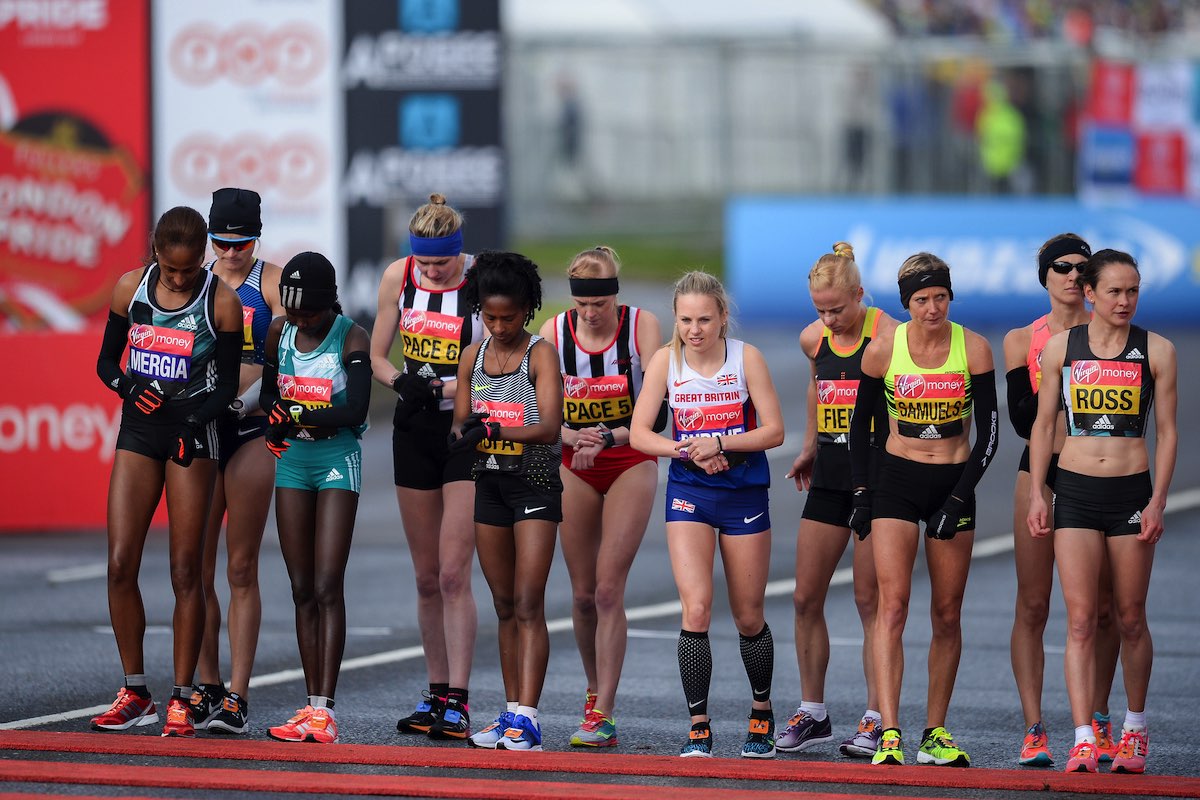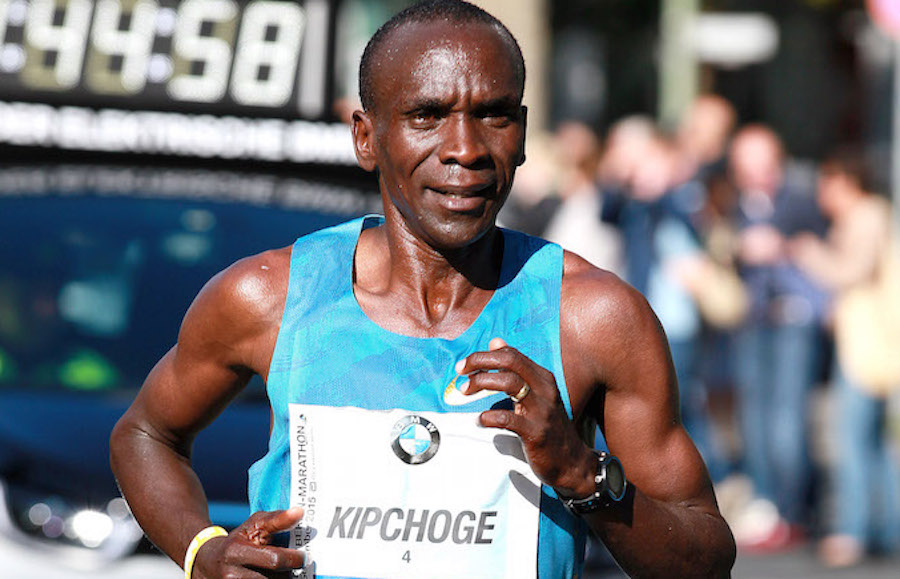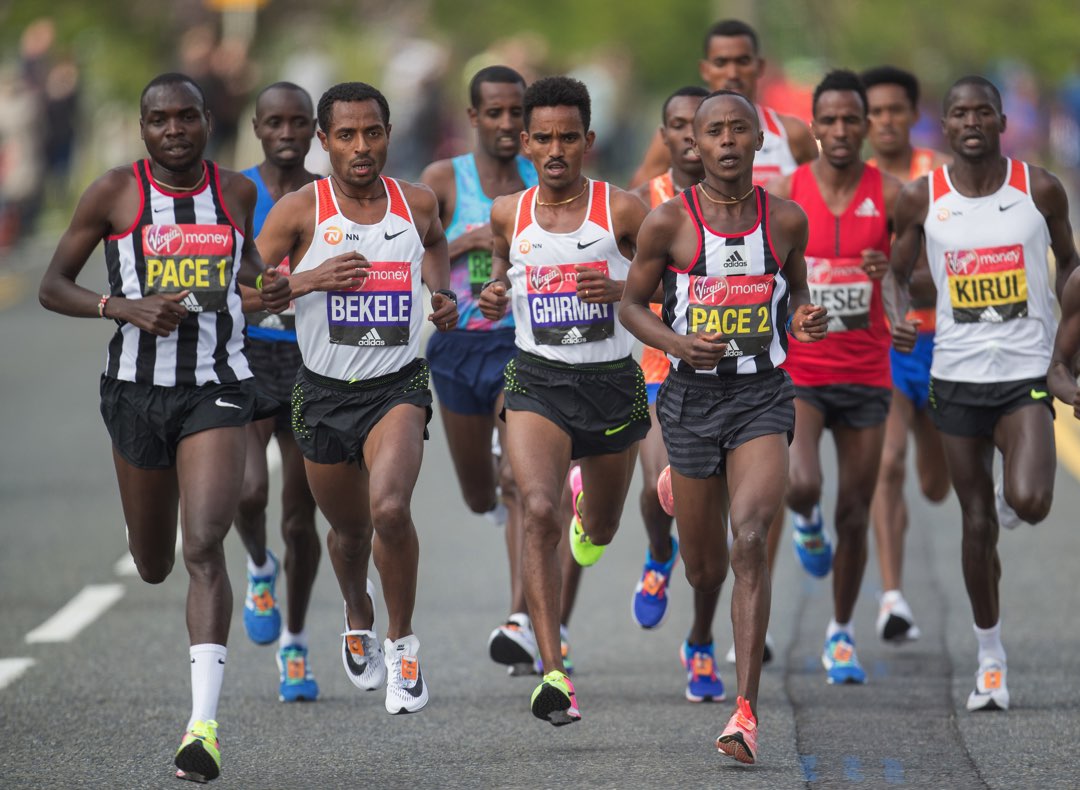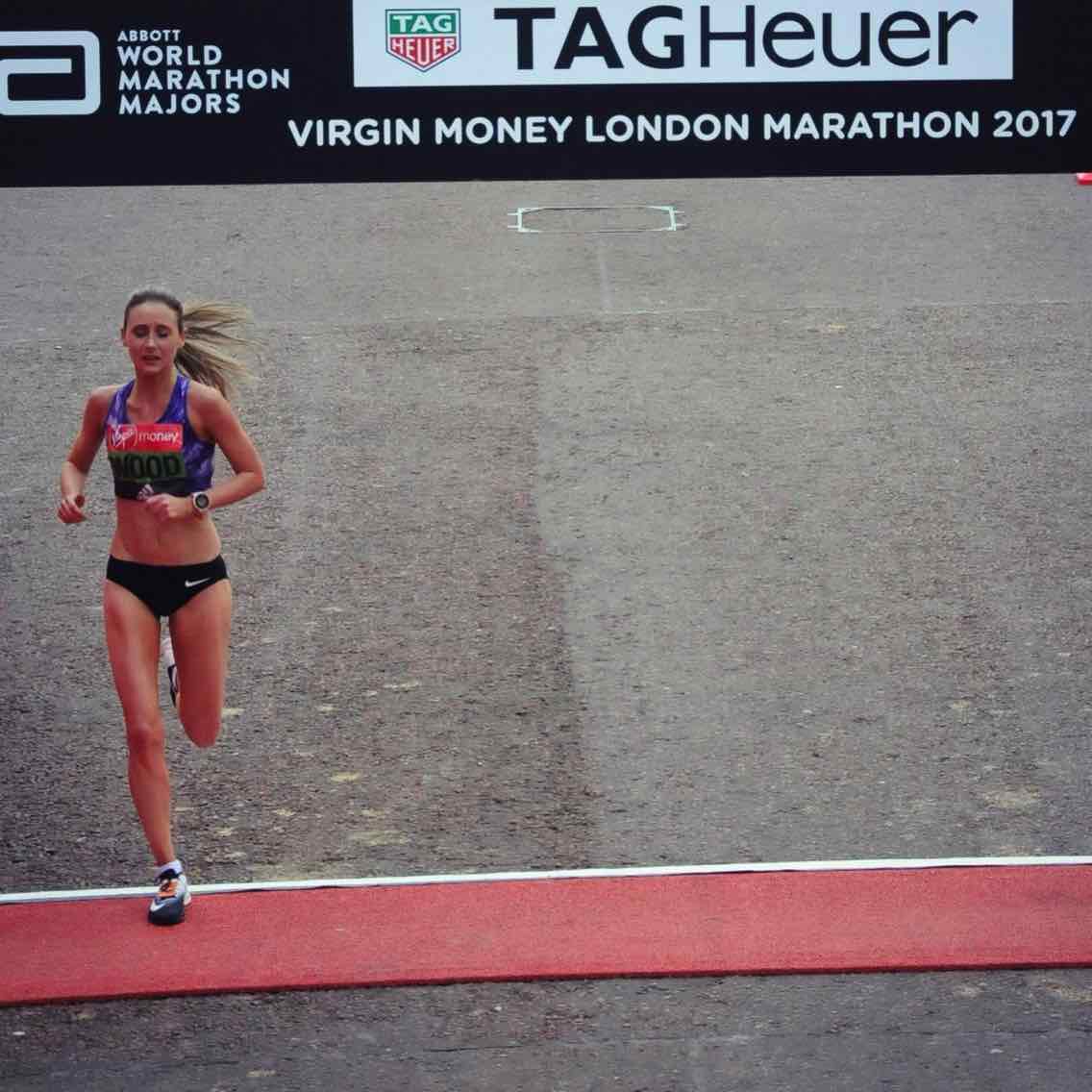Runner’s Tribe – By Alex Dreyer – Nutritionists
At some point in your athletic career, be you elite, amateur, recreational, or age-grouper, there comes a time when a decision must be made about whether to take one of those shiny gels being handed to you at an aid station in that big race you have trained so hard for. The volunteer at said aid station is playing mind tricks on you, assuring you that this gel is the artificial energy boost you are looking for. You know you haven’t tried gels before in training but you remember that good looking athlete on Instagram posting a photo about using them, which is all the science you need to be convinced that, just this one time, trying something new on race-day will work out just fine. Disclaimer; It won’t.

Photo: Jon Buckle for Virgin Money London Marathon
Endurance races are a complex mix of many small but important variables, any one of which can make or break the entire thing. Athletes who are very successful train to ensure that they have as much control over every single variable as possible, whether they are going for an Olympic qualifier or their first sub-2 hour half-marathon. Athletes of all levels will try various moisture-wicking socks, race shorts that don’t ride up into regions of the crotch hitherto unexplored, training sessions that will make you run like Lasse Viren, and the best wireless headphones, but very seldom do runners exhaustively experiment with the actual fuels and supplements propelling them forward. This is surprising given how much difference good nutrition can make; about 15-20% reduction in time to fatigue or 2-3% performance increase in events lasting over 90 minutes for a simple and well executed carbohydrate load, or anywhere from 2-10%+ improvement in endurance performance using a carbohydrate supplement during exercise compared to not using anything.

This nutritional neglect may be due to many reasons, but most of the time it comes down to the difficulty in finding reputable resources that explain easily how to go about practicing nutrition for racing. On top of this, most sources approach race nutrition subjectively. We all know that one guy that swears by vegemite sandwiches to get through a 70.3 Ironman, but it isn’t logical to expect that everyone will enjoy eating something that is essentially soy sauce on starch. So that is what this blog will focus on; A beginner’s guide to race nutrition practice that will give you plenty of options to try, rather than tell you exactly what to have, with the goal of improving your performance at whatever your next big event is.
In my experience as an athlete and as a sports dietitian, practicing race nutrition is exactly like playing “Settlers of Catan.” If you haven’t played before, Catan (as it is known by us basement-dwelling geeks) is a board game played with various hexagonal resource tiles that you settle on to earn that resource based on dice rolls. The aim is to collect 5 different resources, trade them with other players, build roads, settlements and cities, buy an army and control the world of the game. Each objective requires different resources, and simply investing all your time on one thing won’t help you in the long run. The best strategy is to diversify early, expand your reach on the board outwards, and then consolidate on what you have already built to win the game. Having found a love for this game concurrent with a long, 6+ month marathon training block, I can say that the strategy for successful race nutrition preparation is the exact same.
Phase One: Expansion
A good game of Catan always begins with a mad rush to expand outwards by building roads and connecting to different resource hexes. With so many options at this point, you really need to consider what is in your best interest and how aggressive you can be before you have completely alienated all your family members in pursuit of victory. Likewise, when you embark on a big training block for a specific event you need to think about how many components of nutrition you can realistically attempt to master so that they are all well practiced by race-day. Trying too many things will mean if you have any set-backs you won’t be able to narrow down what caused them, leading to race-day anxiety.
For a beginner at phase one you should purely be looking at where you can get the most bang for your buck. Number one is to sort out your everyday diet. No amount of gels, caffeine, nitrate, or electrolytes will make up for a poor diet, so if you aren’t periodising your diet based on your weekly training sessions, or you are missing key nutrients and snack times, you won’t be performing anywhere near your best. If this is something you think you need to work on, get a comprehensive diet analysis from a sports dietitian and figure out what is missing or where you could cut back if your aim is to safely lose some weight while you train.
A beginner should also be considering getting the carbohydrate load right, and practising carbohydrate fuelling for race day, as it is your main energy source for higher intensity exercise. There is plenty of research into this area that suggests a good carbohydrate load or a good carbohydrate race fuelling strategy can improve endurance performance by anywhere between 2-15% in endurance events, and combined may see even bigger returns.
The other essential starting point is practising your hydration strategy. This one is a little tougher as it is highly variable based on your chosen event. What we do know is that dehydration and heat stress can significantly impair performance for a variety of reasons and can bring about a DNF in severe instances. For something that is incredibly easy to practice this should not be the case, so ensure you set some time in your training block to work on your hydration strategy.
If you have plenty of time in your training plan to look at other useful supplements like caffeine, they can be combined with either your hydration or carbohydrate fuelling to hit two birds with one stone. After a debut marathon of 2hrs 29mins with only carbohydrate and electrolytes as supplements, my thoughts are that the basics are all you need as reaching out too far will mean your resources are spread too thin, and you won’t have enough time to fully develop each strategy in training.

Phase Two: Development
Once you have built your roads and figured out how far you are willing to explore, Catan rewards those that develop on what they have explored, quickly. Whether you choose to build an army or to be a resource mogul, it’s important to direct all your resources and investment towards your chosen goal.
Developing a good strategy for the carbohydrate load is relatively easy and can be done right away. Pick your longest run for the week, and eat your favourite high carbohydrate lunch and dinner for 1-2 days before it. This doesn’t need to be done every week; 1-2 times in a 4 month training block is plenty to be confident on race-day. The major issue you are likely to encounter with this is frequent stops to the toilet which is usually due to a high intake of fibre with the extra carbohydrate intake. Examine your sources of carbohydrate and look for lower fibre options during the carbohydrate load ONLY. A good carbohydrate load should be 1-2 days of eating just a little more simple carbohydrate, such as potato and peeled sweet potato or pumpkin, white rice, bread, and pasta, and flavoured low-fat dairy options.
Next, you need to look at the carbohydrate fuelling during the race as long as your event is 90 minutes long or more; any less and you likely won’t see any significant benefits from carb supplements. In this phase you want to try gels, drinks, and solids to figure out the best way forward for YOU (don’t just do what that #fitrunner #athlete says they do on their Instagram). Also, unexpected things will happen during your event, such as a sudden aversion to any more of those margarita flavoured chews, so be prepared to use a mix of options during the race just in case. As a safe entry point, pick a hard session during the week (it should be tempo or harder pace) and aim to get 30g or carbohydrate per hour. For a 20 minute threshold aim to have 2 chews or half a gel, and for a longer 40+ minute tempo aim to get in a full gel or 400-500mL of a carbohydrate electrolyte drink.

Phase 3: Consolidation
Now it’s time to win the game! In Catan, this is the time at which you look over the pitiful efforts of your friends and pick your clear path to victory. That feeling of imposing your will over all others and conquering the variables is unrivalled, just as it will be on race-day. For the carbohydrate load, plan your 2 days of food well in advance, even if you are travelling interstate. For the race itself, the trick to this is to know as much as you can about what stands between you and victory. By now, you should know what fuels you are going to use, and that you can handle a few cups of fluid every hour, so how do you translate that into a PB?
First, go on the event website and look at everything about the course. Know how far it is between each aid station and have in your mind where you can get some extra carbohydrate in the back half of the race. Not every aid station is created equal, so don’t rock up to the volunteers at the 35km mark of your next marathon expecting Endura as it may just be water you find.
On top of this, use the aid stations to “wash-down” your personal fuels such as chews or gels by planning your intake just prior to a water source. If the aid station is at the 16km mark, open your gel at 15km and get it down slowly before taking a small drink to clear out whatever caramel/ chocolate/ coffee/ vanilla concoction you chose.
Lastly, use run tracking resources to get a good idea of the technicality of the course. The last thing a triathlete/ runner wants to do is knock back 500mL of carbohydrate drink in the middle of a tough climb, so be sure to use strava or mapmyrun to get an idea of the terrain.
If you can nail down each of these three key phases you will be well on your way to perfecting your nutrition plan and getting the best results from your next event (or beating your family at Settlers of Catan – your choice). If you aren’t sure about any particular step, or you think you are ready to try something a little more advanced, go see a sports dietitian in your area as they will be an expert on perfecting race nutrition and the latest in sports supplements for performance.
Alex Dreyer
Accredited Practising Dietitian
Provisional Accredited Sports Dietitian
Level 1 Athletics Australia Coach
















